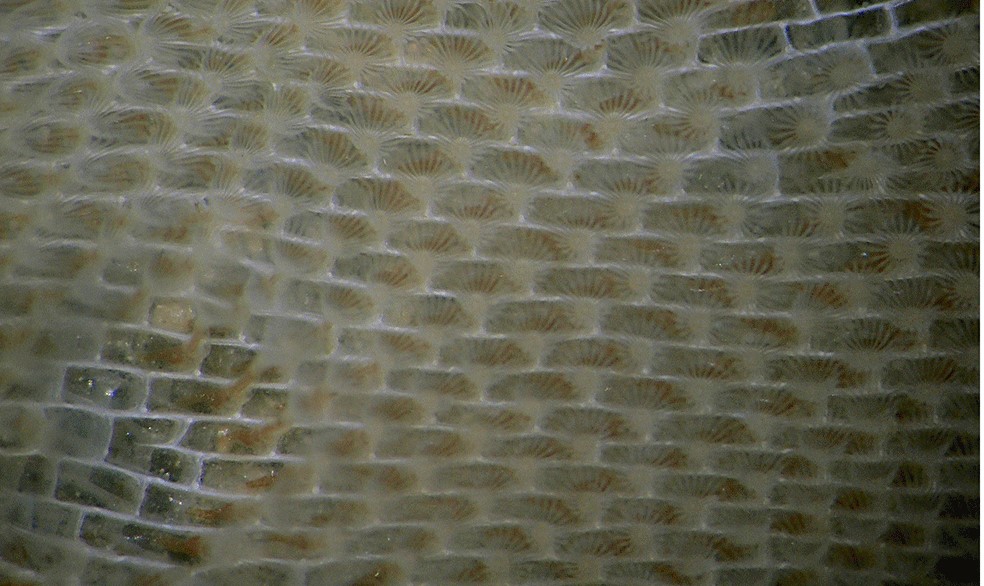2023 started with a string of genome note publications by the MBA Darwin Tree of Life (DToL) team. Following the Great Top Shell, two Bryozoan species have been added to the free Tree of Life Gateway.
Bryozoans are filter feeding, colonial marine organisms that attach to hard substrate, and can be found in nearly all marine environments. One of the bryozoans collected by the DToL team was Membranipora membranacea. M. membranacea can often be seen attached to kelp, forming grey patches, especially in winter storms when kelp washes ashore. Up close, each zooid (individuals that form the bryozoan colony) in this species look like small boxes.

Speaking on the recent surge of genome note publications, Dr John Bishop, Associate Fellow, said;
“It was good to see the genome note published for the bryozoan Membranipora membranacea, one of the better-known and better-researched bryozoan species. It’s one of the first species we collected after the lockdown in 2020, on a local trip to Queen Anne’s Battery here in Plymouth. At that stage we were very much finding our way with processing awkward marine species to send for sequencing. The genome note for another bryozoan from the same site, Bugulina stolonifera, was published earlier in January.”
Forming small, branching tufts, Bugulina stolonifera is usually found on artificial habitats, including marinas such as Queen Anne’s Battery where it was collected, and forms bush-like colonies. The genome notes for both Bugulina stolonifera and Membranipora membranacea can be accessed for free on the Wellcome Research Tree of Life Gateway.